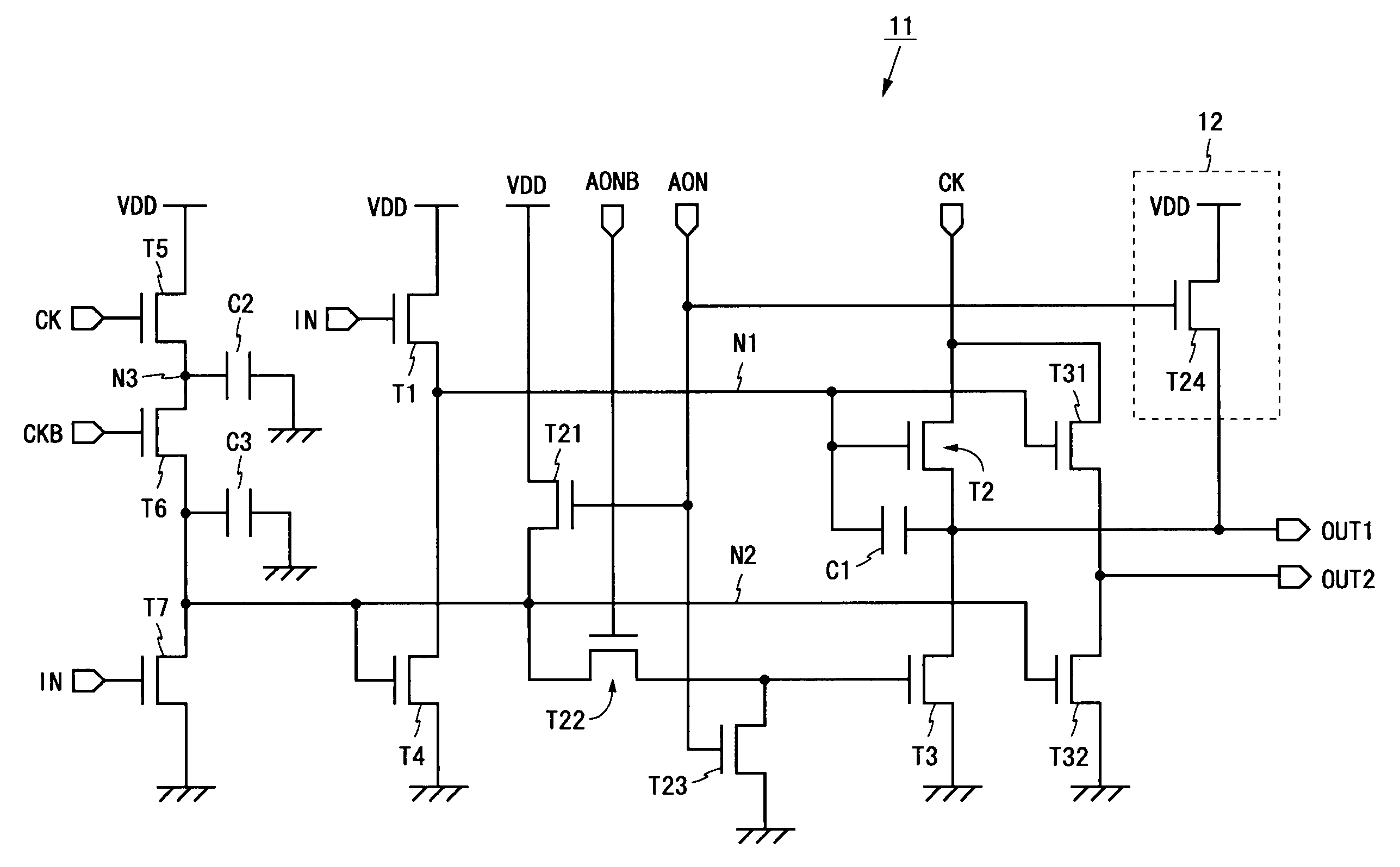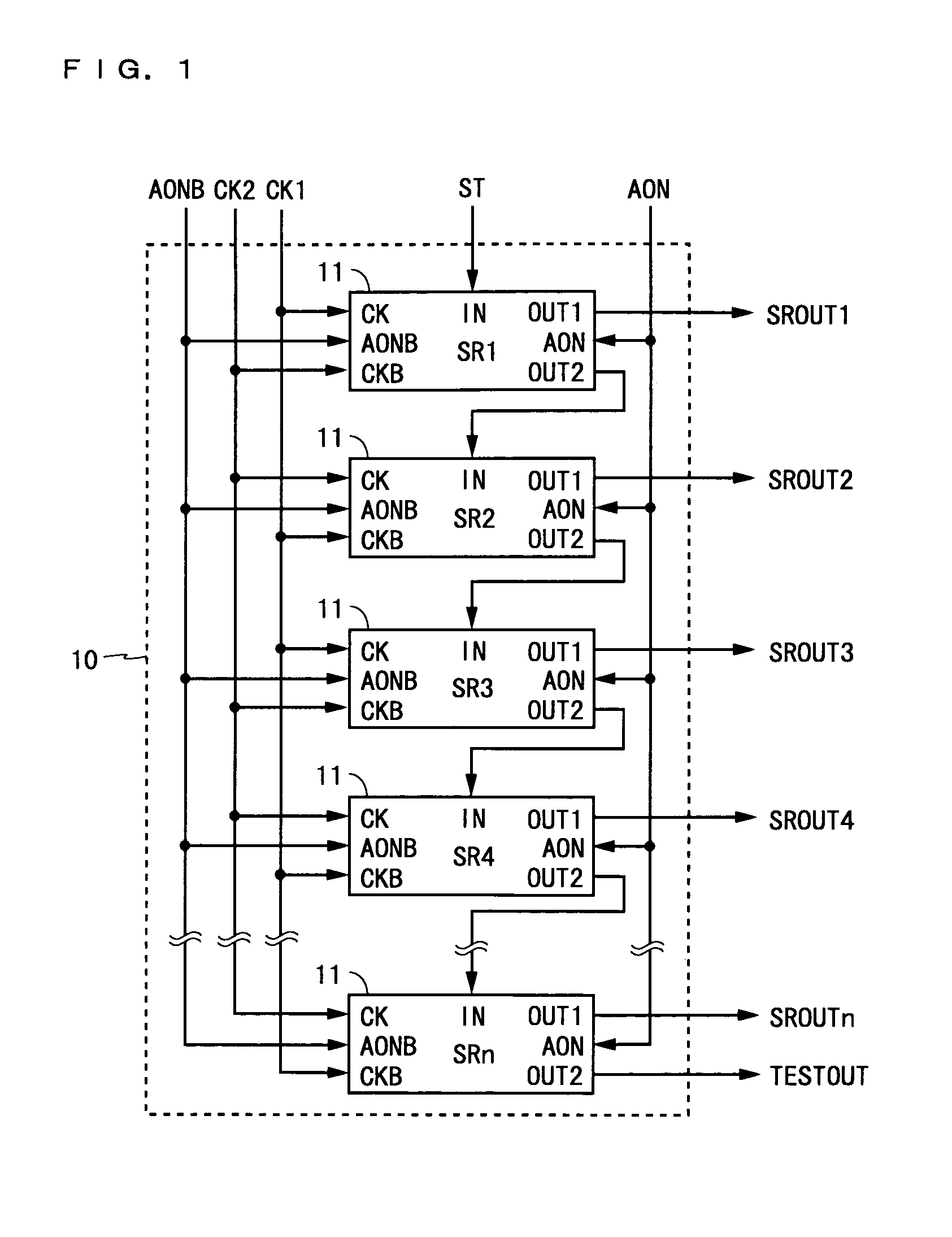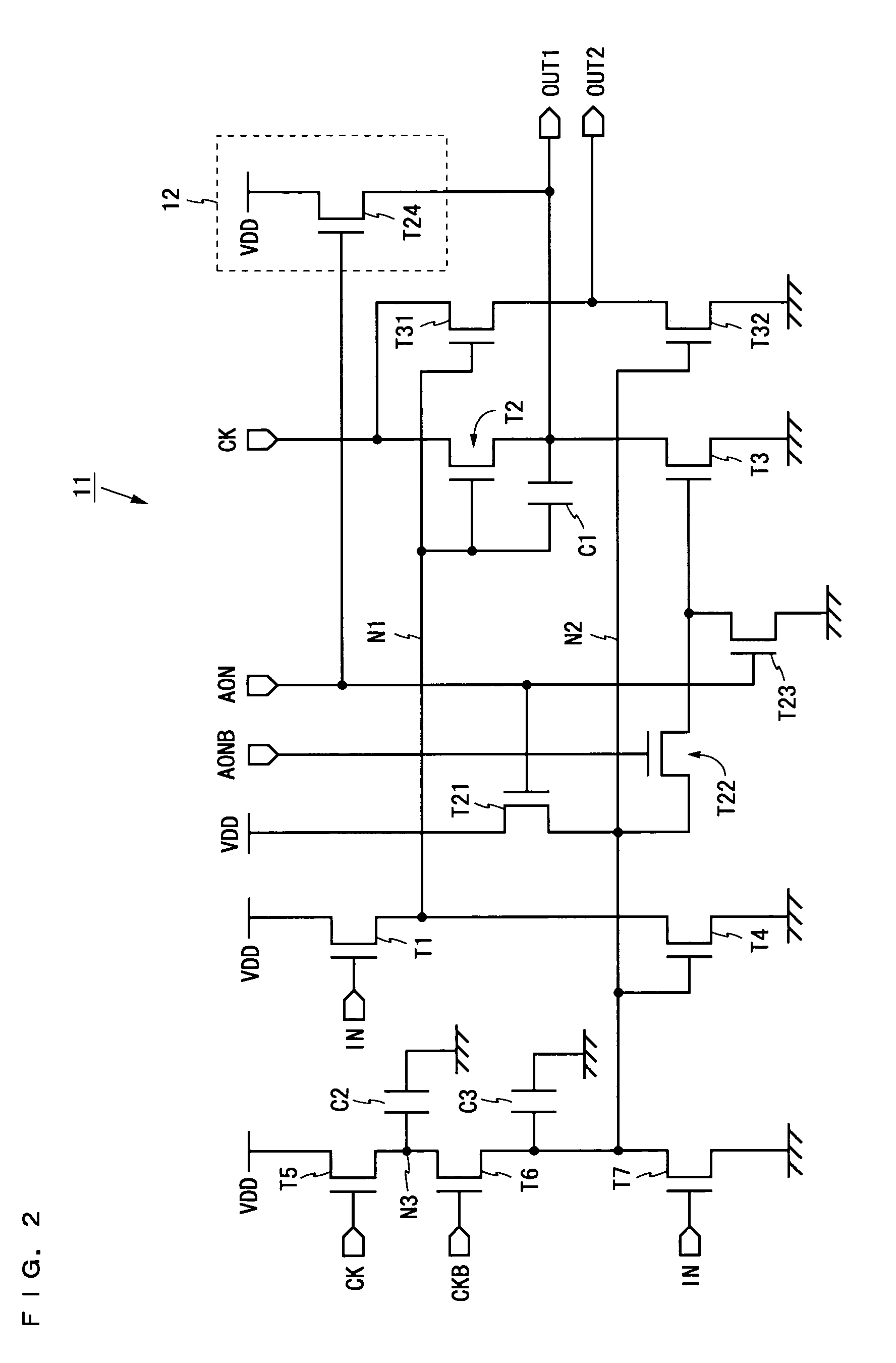Shift register receiving all-on signal and display device
a technology of display device and shift register, which is applied in the field of shift register and display device, can solve the problems of increased power consumption, increased area for laying clock wires, viewers experiencing discomfort, etc., and achieve the effect of reducing the load on the all-on control signal line, and restoring to normal operation more quickly
- Summary
- Abstract
- Description
- Claims
- Application Information
AI Technical Summary
Benefits of technology
Problems solved by technology
Method used
Image
Examples
first embodiment
[0101]
[0102]FIG. 1 is a block diagram illustrating the configuration of a shift register 10 according to a first embodiment of the present invention. The shift register 10 shown in FIG. 1 is configured by connecting n (where n is an integer of 2 or more) unit circuits 11 in multiple stages. Each of the unit circuits 11 has clock terminals CK and CKB, an input terminal IN, a first output terminal OUT1, a second output terminal OUT2, and all-on control terminals AON and AONB. Hereinafter, a signal which is inputted / outputted via a terminal is referred to by the same name as that terminal (e.g., a signal which is inputted via the clock terminal CK is referred to as a clock signal CK).
[0103]The shift register 10 is externally supplied with a start pulse ST, two-phase clock signals CK1 and CK2, and all-on control signals AON and AONB (negation to AON). The start pulse ST is provided to the input terminal IN of the first-stage unit circuit 11. The clock signal CK1 is provided to the clock...
second embodiment
[0141]
[0142]The shift register according to the second embodiment of the present invention is configured in the same manner as the shift register 10, and therefore its block diagram and description are omitted.
[0143]FIG. 6 is a circuit diagram of a unit circuit 21 included in the shift register. Elements of the unit circuit 21 which correspond to those of the unit circuit 11 shown in FIG. 2 are denoted by the same reference characters and any descriptions thereof will be omitted. The unit circuit 21 has two input circuits, i.e., transistors T1 and T7, as provided in the unit circuit 11, and these transistors are connected at their gate terminals to an output terminal of an input signal control circuit 22.
[0144]The input signal control circuit 22 includes two N-channel transistors T41 and T42, and the transistor T41 is connected at a drain terminal to an input terminal IN and at a gate terminal to an all-on control terminal AONB. Also, the transistor T42 is connected at a gate termin...
third embodiment
[0150]
[0151]The shift register according to the third embodiment of the present invention is configured in the same manner as the shift register 10, and therefore its block diagram and description will be omitted.
[0152]FIG. 8 is a circuit diagram of a unit circuit 31 included in the shift register. Elements of the unit circuit 31 which correspond to those of the unit circuit 11 shown in FIG. 2 are denoted by the same reference characters, and any descriptions thereof will be omitted. The unit circuit 31 is provided with a reset signal generation circuit 32 partially different in configuration from the reset signal generation circuit provided in the unit circuit 11.
[0153]The reset signal generation circuit 32 differs from the reset generation circuit of FIG. 1, in that a resistive element R1 is provided in place of the transistor T5, and the capacitative element C2 is omitted. Therefore, in the case of the reset signal generation circuit 32, when the clock signal CKB is set to high l...
PUM
 Login to View More
Login to View More Abstract
Description
Claims
Application Information
 Login to View More
Login to View More - R&D
- Intellectual Property
- Life Sciences
- Materials
- Tech Scout
- Unparalleled Data Quality
- Higher Quality Content
- 60% Fewer Hallucinations
Browse by: Latest US Patents, China's latest patents, Technical Efficacy Thesaurus, Application Domain, Technology Topic, Popular Technical Reports.
© 2025 PatSnap. All rights reserved.Legal|Privacy policy|Modern Slavery Act Transparency Statement|Sitemap|About US| Contact US: help@patsnap.com



